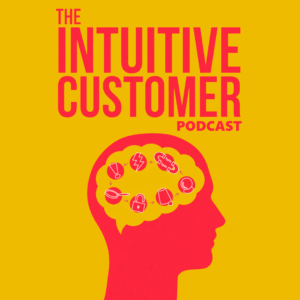Sometimes people say no to sales offers out of habit. They have rules or expectations going into the interaction that preclude them from saying yes. There are ways to overcome these habits. The scientific name for it is Escalation of Commitment, but it is also the basis of many sales techniques, and it is an excellent way to get your customers to say yes.
We discussed the idea behind the Escalation of Commitment on a recent podcast. It starts by getting past people’s preconceived notions of what they are willing to do.
Suppose I want you to give me $100. If I ask you for $100, you are probably going to say no. You likely have a rule about not giving people $100 when they ask for it. However, if I ask for $1, you would probably say yes. I get more than $1 you give me, though; I get you used to the idea of giving me money when I ask for it.
Then, once we have established that you would give me money, I ask for more the next time, like $20. Since you had already given me $1, you might think, “Well, what’s a little bit more?” Bit by bit, I work my way up to $100, starting with gaining your commitment early at a lower amount.
The concept applies to lots of resources other than money. Consider volunteering. I used to be part of a volunteer group called Roundtable, it’s like Rotary Club in the US. It started with a commitment of an hour here or there, and over six months, it grew to several hours a week commitment.
Escalating Commitment into a Sale
In our global Customer Experience consultancy, we have encountered clients that use escalating commitment as a sales technique. They build scripts within call centers to get customers to say yes to things early, effectively getting them in the habit of saying yes. Then, the commitment they ask for grows. The theory is that when you’re asking for the order, they say yes because they’ve said yes to everything else along the way.
Professor Robert Cialdini, Ph.D., psychologist and author, is the preeminent psychologist of sales techniques. He called this the “Foot-in-the-door” method. If your door-to-door salesman can get his toe in the door to the prospect from closing it, escalating commitment suggests that the prospect will eventually invite the salesperson in and buy whatever he’s selling.
My wife, Lorraine, is unfamiliar with this technique. She answered a telemarketing call and started to interact with the salesperson on the other end. When she finally extricated herself from the call, I explained that she should hang up on those calls. As soon as you start answering questions or getting involved, you give them hope.
This sales technique works because it uses our biases as human, the way that we’re hardwired to react to things. Our actions become evidence for our interest. In other words, when Lorraine started answering questions, the salesperson took her answers as a sign of her interest.
However, the tricky bit is that our actions also become evidence to us of our interest. So, if we engage with the salesperson and start saying yes to small things, then some automatic part of us goes, “Oh, I am invested in this topic. It must be important to me.” Then, we use that behavior to justify further action.
Marketing Benefits from Escalating Commitment Also
It applies to marketing, too. There are several theories surrounding communication and advertising. There’s one idea to grab people’s attention and message quickly because people are distracted with short attention spans, which is true. Another school of thought, however, favors long-form advertising or high-engagement communication. The idea behind long-form advertising is if the person is willing to engage with a long-form ad, then it is evidence that they are into it, which leads to more investment.
There are organizations for whom this happens very organically, but we can even do it to ourselves. People often take this path with hobbies. Every action we take becomes evidence of how important it is to us, and so we commit further to it.
For example, I enjoy fishing and have ten fishing rods. Lorraine doesn’t understand why I need ten.
Of course, she likes to cook, so she has different-sized spoons that she uses for different things. When she complains about all my fishing rods, I ask her how many spoons she has in the kitchen.
It goes along with this idea called The Golden Question. The Golden Question is what you ask that identifies the level of commitment you have to an activity or organization. For example, a manufacturer of premium pet food used the following to find out if a pet-owner was their target: Do you buy a present for your pet on their birthday? Pet owners who did buy gifts for their pet on the pet’s birthday were more likely to buy their premium pet food.
I mention The Golden Question because it shows you how escalated those customers are in their commitment to the subject. When you work with customers with escalated commitments, you should provide them a heightened experience. Likewise, when you discover that customers are not as escalated, you should offer an experience that moves them forward in their engagement. So, it is essential to define where that customer is in terms of commitment.
Getting Customer to “Yes”
So, how can you get your customers to say yes? First of all, think of Escalation of Commitment as a ramp or a ladder. That suggests that you should have a natural entry point for people. It can be as simple as allowing them multiple opportunities to say yes to small things or small means of purchase or ways of accessing information.
However, you should design a ramping up process and be deliberate about it. Have the next step for people where they can move from that initial agreement to a higher level of engagement. Get your customers to start saying yes as many times as you can early on by designing that into your experience.
Also, you should understand where your customers are and segment them appropriately by using The Golden Question technique. The experience will feel different, depending on the level of commitment of the customer.
However, it is also important to mention that this shouldn’t be pushy. You aren’t trying to trick people into buying things they don’t want or need. It doesn’t work, and it leaves customers feeling dissatisfied.
Instead, design your escalation of Customer Experience so customers want to get to the next step because they’re experiencing something great. Using deception to work with people’s hardwired preferences to get them to react in a way that’s against their better interests is a bad idea and bad business.
If your sales process involves selling one big thing, then you’re not engaged in an escalation of the commitment process. You don’t have this foot-in-the-door technique down. Your job is to design an experience where people love moving on to the next stage. Allow them a more natural, lower-risk way of experiencing something great.
Now, can I trouble you to loan me $1?
To hear more about How to Get Customers to Say Yes in more detail, listen to the complete podcast here.
 Customer loyalty is a function of customers’ memories. Customer Service excellence is an integral part of how people remember things, but too few organizations take the time to train their customer-facing employees to deliver it. Our Memory-Maker Training fills this gap with instruction in the soft-skills needed to produce a higher level of satisfaction that influences better experience memories as part of an overall Customer Experience strategy. Click here to learn more.
Customer loyalty is a function of customers’ memories. Customer Service excellence is an integral part of how people remember things, but too few organizations take the time to train their customer-facing employees to deliver it. Our Memory-Maker Training fills this gap with instruction in the soft-skills needed to produce a higher level of satisfaction that influences better experience memories as part of an overall Customer Experience strategy. Click here to learn more.

Hear the rest of the conversation on How to Get Customers to Say Yes on The Intuitive Customer Podcast. These informative podcasts are designed to expand on the psychological ideas behind understanding customer behavior. To listen in, please click here.
If you enjoyed this post, you might be interested in the following blogs and podcasts:
How Do Customers Decide If Their Experience is Good or Bad? [Podcast]
How We Make Decisions—Prospect Theory
Why Customers Make Strange Decisions
Colin Shaw is the founder and CEO of Beyond Philosophy, one of the world’s leading Customer experience consultancy & training organizations. Colin is an international author of six bestselling books and an engaging keynote speaker.
Follow Colin Shaw on Twitter @ColinShaw_CX

